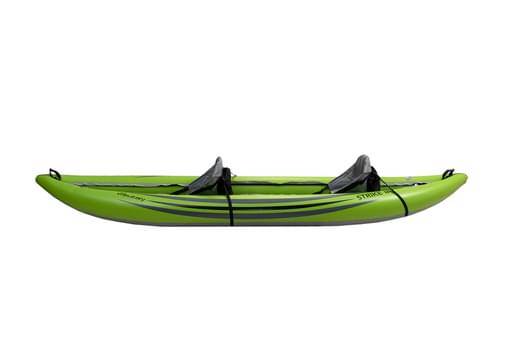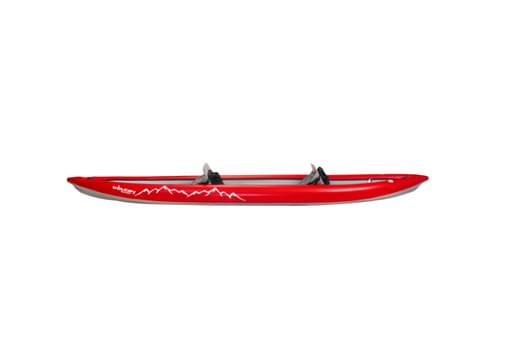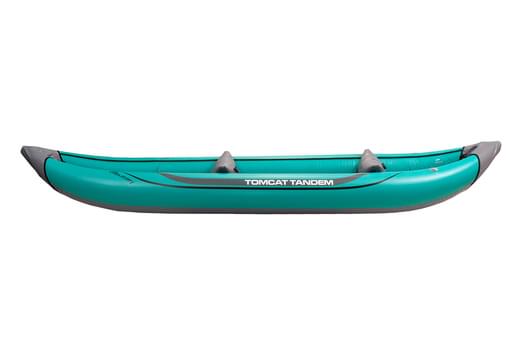- Home
- Gear & Reviews
- Marlin
Marlin

Marlin Description
The Marlin is a kayak brought to you by Kaskazi Kayaks. Read Marlin reviews or submit your own review to share with the paddling community. Check out a few other kayak recommendations below or explore all kayaks to find the perfect one for you!
Kaskazi Kayaks
Marlin Reviews
Read reviews for the Marlin by Kaskazi Kayaks as submitted by your fellow paddlers. All of the reviews are created and written by paddlers like you, so be sure to submit your own review and be part of the community!
I dumped this kayak paddling…
I have owned my Kaskazi…
Seating:
I tried both a backband and a standard SOT seat. Neither was good. I settled on a Yakpads Paddle Saddle with the high backrest, and attached a small inflatable lumbar pad. The seat needs a few minor adjustments to make it perfect, but once complete, it looks like it was made for the Kaskazi. The combo is very comfortable. It attaches to pad eyes with a couple of clips I added to the seat and stays in position for surf launches.
Turning:
This kayak turns and handles well with the rudder, but is squirrely without it. With the rudder up, it tends to track into swells and is difficult to correct with quartering seas on the bow or stern. Once you have it straight, it is hard to turn. Once it starts to turn, it is difficult to stop turning. Without the rudder it is one of the worst handling kayaks I've used, and I'm an experienced paddler. The rudder controls are sensitive. Putting the rudder up and down (especially up) requires some effort until it is well broken in. The rudder pin popped loose after only 2 months, but was easy to epoxy back in place.
Speed and stability:
This kayak is quite fast owing to the narrow width (24.4") and length (15.5'). I have run this with a GPS on a flat calm lake, and the numbers I come up with are impressive. The average cruising speed that can be easily maintained is about 4.3 mph. A fast cruise that you could keep up running down a blitz for a few hundred yards is 5.0 mph. The top speed I could push it to, even for a paddle stroke, was 6.3 mph. This is a pleasure to paddle! The stability is excellent owing to the deep seating. I wouldn’t say it is as good as my Stealth Fisha or the Dorado II, but it is certainly close, and more than adequate. With this boat you are pushing the limits on how narrow and light a fishing SOT can be, so you need to take that into account. The deep cockpit also makes it a bit less fun to sit sidesaddle, although it is perfectly doable. But raise your butt too much and you lose the stability. For example, reaching the front hatch on the water is quite tricky.
Hull slap:
Almost nonexistent. This is one of the quietest kayaks I’ve used. Because the hull is so narrow you do get splashed heading into larger chop.
Weight and durability:
The actual weight (48 lbs.) was well under the listed weight of 55. I had some issues with the gelcoat wearing on the rear hull from dragging it over sand. I bought some extra gelcoat, slapped an extra layer of white gelcoat on a few inches of the center stern, and so far, so good. With heavy use you will need to do this once a year. The only other problems have been fine cracks in the gelcoat radiating an inch or so out from the flushmount rod holders. These holders flex the hull quite a bit in u
se, and while the fiberglass is OK, the stiffer gelcoat develops cracks. To be fair, the thin gelcoat on this kayak keeps the weight down. It’s a tradeoff I can live with. There are several points where rudder rigging or the paddle in the keeper rubbed on the hull. I protected these with strips of 3M anti-slip tape.
Surf:
If you hold this kayak straight coming in on wave faces bigger than 3-foot or so, the nose tends to bury (perl). It also tends to turn broadside if caught by waves from the rear, but it braces so easily and well that it’s actually a good thing. You won't perl! And it is fast enough to squeak in between waves most of the time. I haven't used it enough to know how large a wave it can get over going out, but it has popped over some fairly substantial ones already. I got clobbered a couple of times on landing, and this put a 1 inch crack in the gelcoat finish near the front hatch but the glass hull itself was fine.
Because the hull shape handles so poorly without the rudder, you are forced to land with the rudder down. Not great.
Other stuff:
There is no tankwell, just a slight recess in the rear hatch lid. Kaskazi supplies a small crate that fits this recess, but the crate has no lid and I believe it would quickly rub the hatch. I first used a surf bag (Seattle Sports Kayak Catch Cooler) strapped down over the rear hatch instead of a crate to hold gear, and this worked OK. Unfortunately, like the supplied crate, it puts weight above the deck where it detracts from stability. I have now been using a soft-sided tackle bag inside the rear hatch, and this is much better. For surf launches I stow my 2-piece rods lashed over the rear hatch. I cover the butt portion of the rods and the reels with a dry bag. Not perfect, but quite solid.
I also added a regular shock-cord paddle keeper, a bungee over the front hatch, some additional pad eyes and a central straight flushmount rod holder between the two angled flushmounts. In addition, I put a drain in the nose. I use a bungee over the rear hatch when transporting the kayak because the straps on the hatches tend to work loose on the highway. In addition, I added several three-bar plastic slides on the straps over the hatches and this keeps them from loosening. You should add some kind of keeper or retainer to both hatches so you won't lose them on the water.
There is about an inch of water in the footwells, and I'm a light guy – 150#. Too much! I believe this area was lowered to allow guys with big feet to use the optional ARX spraydeck that can be mounted on this kayak. I used Velcro to put sheets of closed cell foam in there to raise that floor section and eliminate most of the water. Much better. In addition, the seat has no scuppers. Water that gets in there, stays in there. I thought this would bother me, but it doesn't.
The small center console is nice for holding gear on the water, like extra lures, water, phone, and so on. I had to add some weather strip there to improve the seal on the lid. The seal on both the front and rear hatches was also improved with some extra weatherstripping.
The opening around the rear hatch is made of thin fiberglass with no added lip. Because it is unprotected it is prone to damage. Be careful!
The handles on the sides of the kayak are well placed, and it’s easy to carry in the reverse position with the center console resting on your shoulders.
Bottom line:
The Marlin is a fast, very lightweight, stable fishing kayak. If you are looking for something easy to handle off the water and efficient on the water, and are a minimalist as far as tackle goes, this is a great boat. With some minor tweaks it could be fantastic.
• Get rid of the custom front hatch and replace it with a large, well-made, after-market hatch.
• Improve the strap material on the rear hatch and reinforce the edge of the hatch opening.
• Raise the foot wells close to or above the water line.
• Add an extra layer of heavy gelcoat to the hull along the keel.
• Improve the seals on the hatches, and protect the hull with tape where protection is needed.
• Alter the hull shape for better handling without the rudder.



